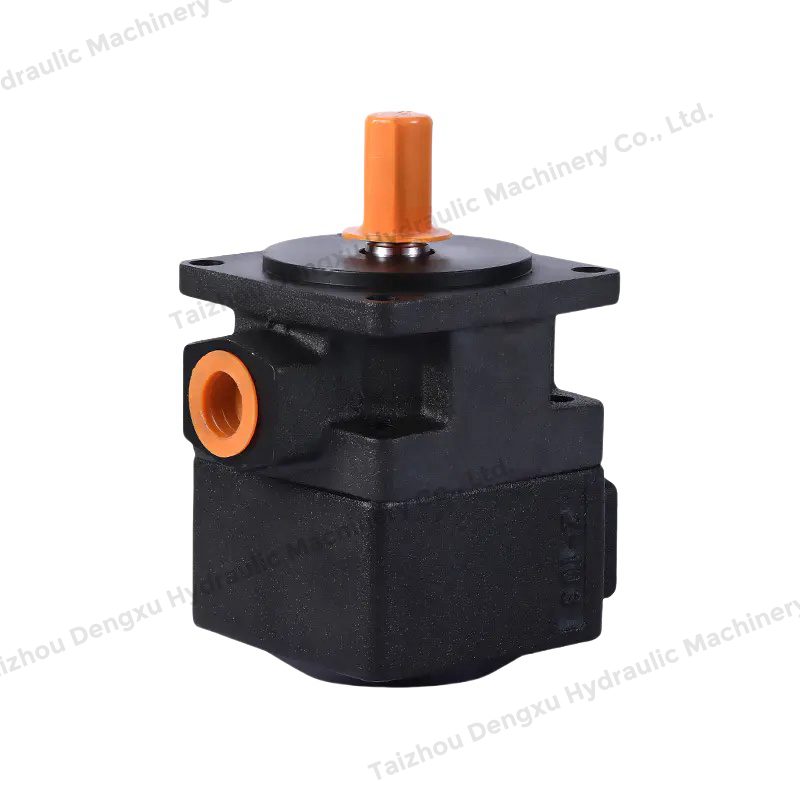The selection of a Hydraulic Double Vane Pump is a critical decision in the design and maintenance of hydraulic systems. Known for their balanced design and consistent flow output, this type of pump is a common choice for industrial machinery, mobile equipment, and various high-pressure applications. The process of choosing the right Hydraulic Double Vane Pump involves a careful analysis of the system's demands and the pump's inherent characteristics. An appropriately specified Hydraulic Double Vane Pump ensures efficient operation, longevity, and reliability, while an incorrect choice can bad performance or premature wear. The specification process generally revolves around three core areas: performance parameters, fluid and material compatibility, and physical and economic factors.

Determining Performance and Pressure Requirements
The fundamental step in selecting a Hydraulic Double Vane Pump is matching its performance capabilities to the needs of the hydraulic circuit. This ensures the pump can deliver the necessary power without being overworked or inefficiently oversized.
Operating Pressure and Flow Rate: The two critical performance specifications are pressure and flow. You must determine the operating pressure (in bar or psi) that the system requires to perform its work. The Hydraulic Double Vane Pump must be rated for a pressure equal to or exceeding this value, including a reasonable safety margin. Simultaneously, the required flow rate (in liters per minute or gallons per minute) dictates the physical size, or displacement, of the Hydraulic Double Vane Pump. This flow rate determines the speed at which actuators will move. Selecting a pump with the correct displacement ensures the system operates at the desired pace without requiring excessive throttling, which can generate heat and waste energy.
Drive Speed and Torque: The rotational speed (in RPM) at which the pump will be driven by the prime mover (e.g., an electric motor or engine) is a key input. The performance charts for a Hydraulic Double Vane Pump will specify its acceptable speed range. Operating outside this range can cavitation at high speeds or insufficient lubrication at low speeds. The input torque requirement of the Hydraulic Double Vane Pump must also be calculated to ensure the prime mover has adequate power to drive it at the required pressure and flow without stalling.
Volumetric and Overall Efficiency: Efficiency ratings indicate how effectively the pump converts mechanical input into hydraulic output. Volumetric efficiency refers to the pump's ability to minimize internal leakage, while overall efficiency accounts for both volumetric and mechanical losses. A more efficient Hydraulic Double Vane Pump will consume less input power, generate less waste heat, and contribute to a more economical and cooler-running system over its lifespan.
Assessing Fluid Compatibility and Construction Materials
The internal components of the Hydraulic Double Vane Pump must be compatible with the hydraulic fluid and the operating environment to ensure durability and prevent premature failure.
Hydraulic Fluid Type and Viscosity: The specification sheet for a Hydraulic Double Vane Pump will clearly state the compatible fluid types, such as mineral-based, synthetic, or water-glycol fluids. Using an incompatible fluid can cause swelling, corrosion, or accelerated wear of the vanes, bearings, and seals. Furthermore, the fluid's viscosity range is crucial. The selected Hydraulic Double Vane Pump is designed to operate within a specific viscosity band; fluid that is too thick can cause high starting torque and cavitation, while fluid that is too thin can inadequate lubrication and increased internal leakage.
Material Selection for Vanes and Housing: The vanes are the primary wear components in a Hydraulic Double Vane Pump. They are typically made from materials like hardened steel or composite materials designed for low friction and long life when paired with the specific hydraulic fluid. The pump housing (cartridge) and side plates are also constructed from materials chosen for their wear resistance and compatibility with the system pressure and fluid. The right material combination for the Hydraulic Double Vane Pump is essential for achieving its rated service life.
Shaft Seal and Bearing Options: The shaft seal prevents fluid from leaking along the drive shaft. Different seal elastomers (such as Nitrile, Viton, or Polyurethane) are required for different fluids and temperature ranges. Similarly, the bearing type must be suited to handle the radial and axial loads imposed by the pump's operation. Specifying the correct seal and bearing for your Hydraulic Double Vane Pump is vital for preventing external leaks and ensuring reliable mechanical operation.
Evaluating Physical Configuration and Economic Factors
The final selection criteria involve the practical integration of the pump into the system and a consideration of its total cost of ownership.
Mounting Style and Port Configuration: The Hydraulic Double Vane Pump must physically fit into the available space. Common mounting styles include flange-mounted, foot-mounted, or cartridge-style units for insertion into a separate reservoir. The inlet and outlet port sizes and threading (e.g., SAE, BSPP, NPT) must match the existing hydraulic lines to ensure a leak-free connection. The physical configuration of the Hydraulic Double Vane Pump is a primary factor in its installability.
Noise Levels and Maintenance Accessibility: In noise-sensitive environments, the sound pressure level (in dBA) of the Hydraulic Double Vane Pump can be a deciding factor. Manufacturers often provide noise data for their models. Additionally, considering the ease of maintenance, such as the simplicity of replacing vanes or seals, can reduce downtime and labor costs during the pump's service life.
Initial Cost vs. Lifecycle Value: While the initial purchase price is a consideration, it should be weighed against the expected durability, efficiency, and availability of replacement parts. A more expensive but highly efficient and reliable Hydraulic Double Vane Pump may offer a lower total cost of ownership than a cheaper, less efficient model that consumes more energy and requires more frequent repairs.

 Search
Search
